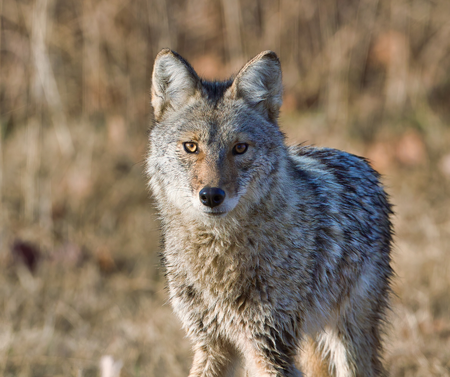
Co-Existing with Coyotes in Kane County
According to wildlife experts, coyotes are more active and more visible during this time of year (late winter / early spring) which is their breeding season.
Coyotes are a permanent fixture in Kane County’s rural, suburban and urban areas. Seeing a coyote cross a field, backyard, road or golf course does not necessarily constitute a problem or dangerous situation, either for humans or domestic animals. Most coyotes are harmless; their goal is to eat more natural foods such as mice and rabbits. However, coyotes are opportunistic. If coyotes see easy food – such as open garbage – and aren’t afraid, they may take advantage. That puts them in direct line for a confrontation with pets.
Some tips on living near coyotes:
- Don’t feed any wild animals such as raccoons or deer, which encourages coyotes as well. Garbage should be stored in secure containers. Do not put meat scraps in compost piles.
- Remove bird feeders and outside pet food containers. Coyotes will prey upon small mammals that are attracted to birdseed and pet food.
- Don’t allow pets to run free and keep a watchful eye on them. Walk dogs on a leash, especially at night. Keep cats indoors at all times. Do not let pets out at night unless accompanied by a person. Don’t leave cat or dog food outside.
- Provide secure shelters for poultry, rabbits, or other outside pets.
- Clear wood piles, brush piles and other potential cover for coyotes. Secure garbage in areas where coyotes can’t access it; keep yards clean of refuse and brush.
- Don’t leave small children outside unattended.
- Reinforce the coyotes' natural fear of humans by turning on outside lights, making loud noises, throwing rocks and so forth. Be aggressive in your actions. Although the response may not be immediate, eventually the coyotes will flee.
- Consider fencing your yard. Use a minimum height of 6 feet and bury the bottom at least six inches below ground level. Slant the top of the fence away from the enclosed area to prevent them from getting over the top.
- Encourage your neighbors to follow the same advice.
Overpopulations of Canada geese and deer in urban and suburban areas have provided coyotes with plenty of food sources. In some cases, coyote predation on Canada geese eggs and goslings has slowed their reproduction to 1 percent to 2 percent, down from 10 percent and 20 percent. Coyotes also have been known to take fawns or diseased adult deer.
Hunting and trapping coyotes has mixed results. Hunting and
trapping can help control populations in rural areas, and instills and
maintains the natural fear coyotes have for humans. However, removing
all coyotes from an area is unrealistic and always temporary.

